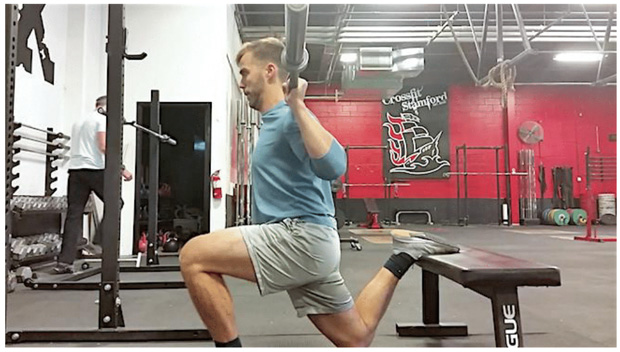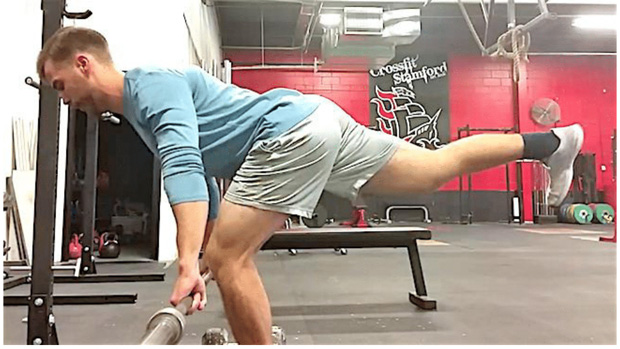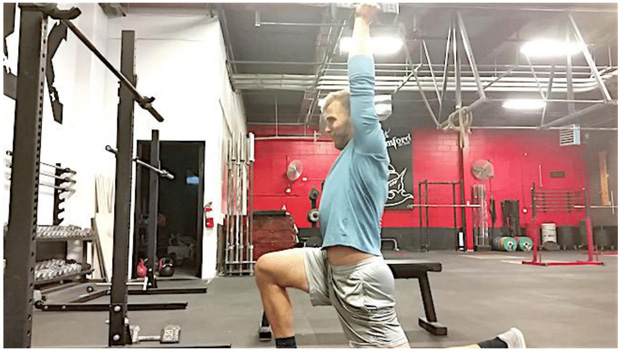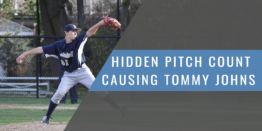| The Secret to Building a Strong and Durable Baseball Body |
| By: Brian Donofrio
Provided by: STACK When working with baseball pitchers at Advanced Therapy and Performance, we know that our guys have many needs to address coming off a grueling season that runs from 140 to 162 games. Our main goals during the first phase of the off-season are to improve mobility and core stability, improve work capacity, and re-teach patterns to get our guys moving better and feeling better. This allows for greater increases in performance during the latter phases of the off-season, when the new season nears. One way we attempt to hit all these goals is to use more unilateral (single arm/single leg) exercises when training our pitchers. Unilateral training is a great way to minimize asymmetries and strength deficits on opposing sides. Any time we get an athlete in a unilateral position or performing a unilateral movement, we can address core stability, improve single-arm and single-leg strength and present a greater challenge to the nervous system. And by using unilateral training, we effectively double the volume of work in a given lift (10 reps per side equals 20 total reps), which helps increase the athlete's total work capacity. We can effectively correct faulty movement patterns, improve mobility and increase endurance. All of these are top priorities for any strength and conditioning program to reduce the risk of injury. Baseball is a predominantly asymmetric and unilateral sport, so we incorporate a lot of unilateral training to get our baseball pitchers moving well, healthy and strong. Below are some of the best unilateral exercises we use when helping baseball players get optimal results from training. SPLIT-SQUAT VARIATIONS
Split-Squat variations put the athlete in a great position for their sport (pitching, hitting, sprinting), and they're also great for teaching eccentric loading of the hips, challenging core stability, and stimulating the nervous system. Start tall, sink your hips down into the bottom position and drive up using your front foot and hip to return to the starting position. We use Split-Squat Holds, Loaded Split-Squats, Rear Foot-Elevated Split-Squats and Reverse Lunges throughout our programming for baseball pitchers. For any of these exercises, we look for an upright torso, knee in line with toes, extension of the back hip and back toe on the ground at the bottom position. SINGLE-LEG DEADLIFT
The Single Leg Deadlift is a challenging unilateral hip hinge pattern. Keep your chest tall, chin tucked and trail leg straight while actively pushing your planted hip back toward the wall to create a proper hinge pattern. The key is to stand back up using your glute and hamstring of the planted leg, rather than just swinging your trail leg through. The offset dumbbell increases the stability demand of the exercise and it's a great way to progress in the early off-season. SINGLE-LEG STEP DOWN
This is another great exercise to teach proper eccentric loading of the hips. Sit your planted hip back as far as possible while maintaining a neutral spine and a tall chest. The goal is to control the pattern all the way until the heel of your trail leg taps the ground, then return to standing. To progress, increase the height of the box to train strength in increasing ranges of motion, then start adding load. HALF-KNEELING SHOULDER PRESS
The half-kneeling position is a great way to challenge stability while still giving the athlete multiple points of contact to reference. Make sure your front foot is firmly pressed into the ground, with your hip engaged. Contract your back glute while your back toe is pressed into the ground. This setup maximizes stability in the lower half, allowing greater transference of power. From this position, we like to give our athletes an offset dumbbell (right arm with left knee forward and vice versa), starting with the weight by the shoulder and pressing straight up to increase strength in end range of shoulder flexion. It's a great exercise to train shoulder stability and to teach how to generate force through the ground and leverage points of contact to gain stability through the movement. KNEE-SUPPORTED ROW
All athletes need a strong posterior chain, and this is especially true for baseball pitchers. They need a high level of strength and stability through their upper posterior (scapula, rotator cuff muscles, trapezius) to allow them to get into a good position at the cocking phase of the pitch, as well as to help them decelerate through the finish. Set up with your knee and hand on the same side of the bench, keep your back flat and chest tall, and push your planted hand into the bench. Your opposite leg should be even with your hips and out to the side while you hold the dumbbell with your opposite hand at shoulder height. We coach the Row by having the athlete think about pulling the shoulder blade down and back to increase middle and lower trap activation, followed by a controlled lowering of the weight to emphasize stability throughout the full range of scapular abduction/adduction. Make these exercises a staple of your off-season training if you're looking to take your performance on the mound to the next level. |












